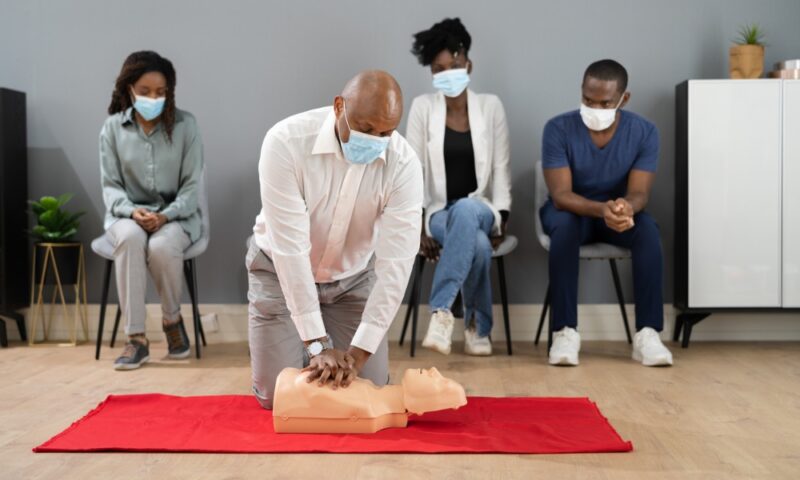
Association Launches CPR Training Program for Black and Hispanic Communities
The American Heart Association’s Be the Beat initiative is designed to bring training to churches, colleges, and other spaces where CPR knowledge can be easily shared.
A leading medical association has launched a grassroots initiative to address troubling trends concerning cardiac health among Black and Hispanic Americans. Be the Beat, an initiative of the American Heart Association, is designed to educate members of those communities on life-saving CPR techniques. Be the Beat was announced February 1 to coincide with the beginning of Black History Month.
According to AHA, research shows that Black and Hispanic adults experiencing cardiac arrest are less likely to receive care from a bystander, and that Black Americans are 25 percent less likely than other racial and ethnic groups to receive CPR in a home. Dr. Kendra Outler, a board-certified anesthesiologist who works with AHA on community outreach programs, including Be the Beat, said that less education around CPR and disproportionate levels of advanced heart disease among those communities prompted the initiative.
When you decrease the fear factor, people start to engage with the information.
Dr. Kendra Outler
“The Be the Beat campaign can hopefully allow for more education and less intimidation around doing CPR,” she said.
As its name suggests, Be the Beat emphasizes CPR basics like the importance of steady chest compressions, without the need for mouth-to-mouth resuscitation. (AHA has created a playlist of funk, R&B, and hip-hop songs that fit the target chest-compression rate of 100-120 beats per minute.) Because a leading healthcare issue in underprivileged communities is easy access to transportation, a key element of the campaign is that it features volunteers (called Be the Beat Ambassadors) to bring the message to places such as churches and historically black colleges and universities (HBCUs).
“We’re looking to have grassroots organizations go to churches and HBCUs so people can learn to call for help, initiate high-quality CPR, and look for an AED (automated external defibrillator),” Outlet said. “College kids are an extension of the communities where they come from, and churches have always been a staple of any type of outreach within Black and Hispanic communities. So that’s always going to be a part of the strategy.”
While Be the Beat is designed to help people address emergency cardiac events, Outler said the initiative also offers an opportunity to talk about preventative care. “The Black community suffers overwhelmingly from hypertensive disease and stroke, so you can’t just say the only thing we need to focus on is teaching CPR,” she said. “We have to get in front of the causes.”
Though AHA doesn’t have figures yet on the number of participants in Be the Beat, Outler said the simplicity of the message, and the fact that it’s delivered directly into communities, can help make it successful.
“The thing that makes Be the Beat so great is that it doesn’t take a lot of time for the participant to learn how to save a life and then move on to their daily activities,” she said. “When you decrease the fear factor, people start to engage with the information. As we see the list of community churches, universities, and grassroots organizations get longer for the American Heart Association, that’ll be our metric on how well we’re doing.”
(AndreyPopov/iStock/Getty Images)






Comments